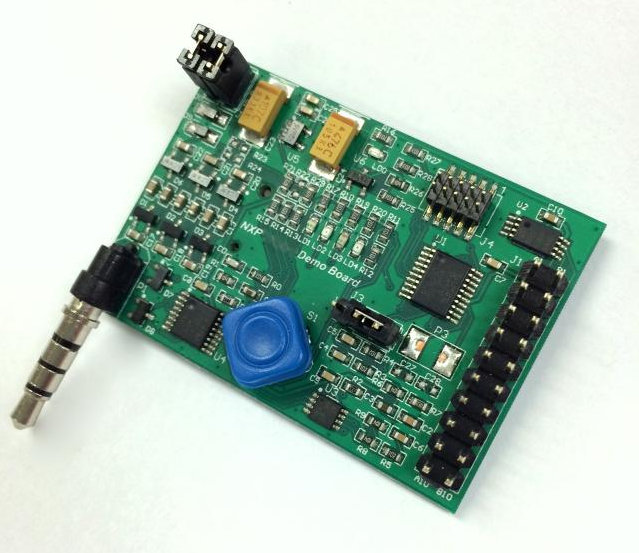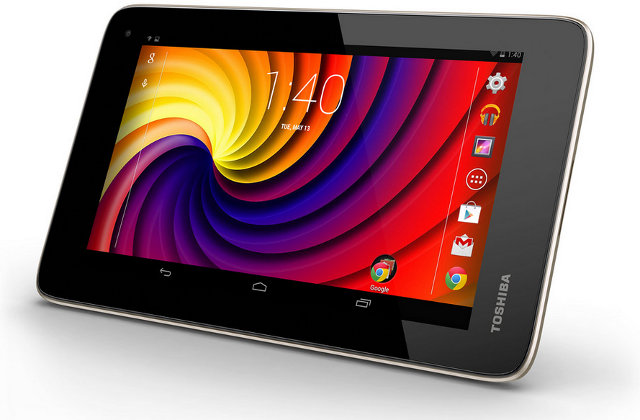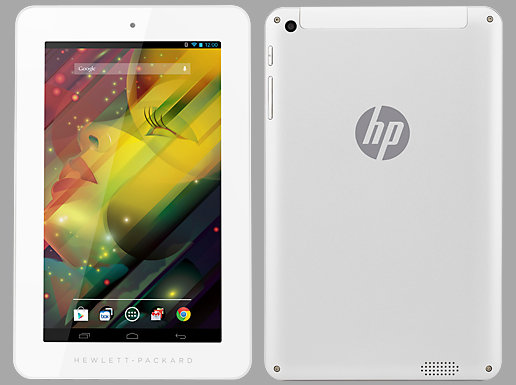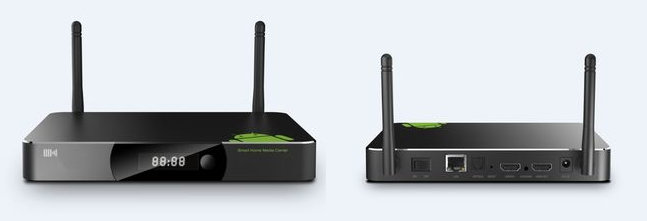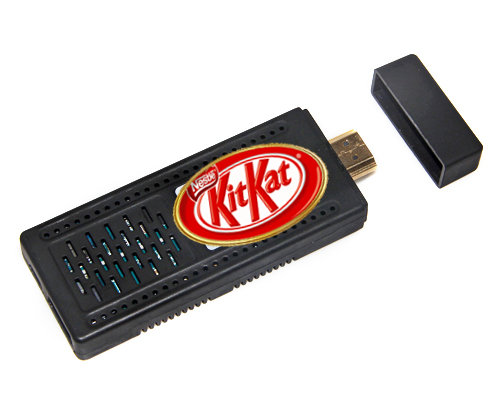Linaro 14.05 has been released with Linux Kernel 3.15-rc5 (baseline), Linux Kernel 3.10.40 (LSK), Android 4.4.2, and Ubuntu has been switched from Saucy to Trusty. More work has been done on big.LITTLE processing and ARMv8 support with notably completing bootstrapping with Debian 64-bit. New hardware platform have started to pop-up such as TI J6-Vayu which must be an evaluation board for Texas Instruments Jacinto 6 dual core Cortex A15 SoC for automotive application, as well as IFC6410, a Snapdragon 600 development board which got a Ubuntu LEB image. This month also marks the first release of Linaro GCC 4.9 toolchain. Here are the highlights of this release: Linux Linaro 3.15-rc5-2014.05 new Android topic (linaro-android-3.15-experimental) uses the resent AOSP code base GATOR version 5.18 (same version as in 2014.04) uprobes topic removed as all patches have been accepted into mainline updated big-LITTLE-pmu topic from ARM LT updated basic Capri board support […]
NXP Smartphone Quick-Jack Solution Connects to Your Smartphone Audio Jack and Interfaces with Sensors, HMI Devices
We already knew the audio jack on your mobile device was not only for your headset, thanks to small items like Pressy hardware button. But it’s actually possible to do much more, as shown by NXP smartphone quick-jack solution, a board that can interface sensors to your Android smartphone / tablet or iPhone / iPad via the headphone/microphone jack of your device. The company claims it can be used for various applications such as cloud-based tracking of sensor data, external input devices to smartphone, wearable health monitors, personal exercise trackers, handheld weather stations, handheld inventory monitors, handheld/portable POS devices, and universal remote controls, using powered harvested from the audio jack, and optionally a battery. Let’s go through the hardware specifications of this little board codenamed OM13069: MCU – NXP LPC812 ARM Cortex M0+ MCU @ 30 MHz with 16KB flash, 4KB SRAM On-board peripherals – Joystick, temperature sensor, and LEDs […]
Pivos Unveils XIOS XS Android XBMC TV Box Powered by Amlogic AML8726-MX Processor
When XBMC Android development was announced in 2012, the main development platform was Pivos XIOS DS, a TV Box based on Amlogic AML8726-M1 that can run either XBMC Linux or Android, and the company (Pivos Group) was the main sponsor and contributor for XBMC on ARM. Contrary to many other companies that push faster and faster hardware, Pivos Group focuses on software and user’s experience, and they’ve just announced he successor of the Pivos XIOS DS, called the Pivos XIOS XS powered by Amlogic AML8726-MX dual core Cortex A9 processor and feature their own heavily custom version of Android called ToFu Media OS. Let’s go through the hardware specifications first: SoC – Amlogic AML8726-MX dual core Cortex A9 @ 1.5 GHz with Mali-400MP2 GPU System Memory – 1 GB DDR3 Storage – 8GB eMMC + micro SD card slot up to 32GB Video Output – HDMI 1.4b with CEC support […]
Toshiba Excite Go 7″ Android Tablet Powered by Intel Atom Quad Core Processor Sells for $110
If you still think that only products based on ARM can be inexpensive, Toshiba Excite Go might change your mind. The latest Toshiba tablet is somewhat similar to HP 7 Plus with a quad core AllWinner A31 SoC and a 7″ display with a resolution of 1024×600, but instead it features an Intel Atom quad core processor, and sells for just $10 more at $110 (MSRP), but CNET reports it might even sell for just $99. The complete specs have not been released, but here’s what we do know, and/or can speculate with educated guesses and pictures from Engadget: SoC – Intel Atom “Bay Trail” Quad core SoC. Probably one of the cheapest Bay Trail-T, so either Atom Z3735F or Z3735G both listed for $17 (Tray price). Z3735F supports up to 1Gb RAM, Z3735G up to 2GB RAM. Both are clocked at 1.33 GHz, and up to 1.83 GHz (Burst […]
Prpl Non-Profit Organization to Work on Linux, Android, and OpenWRT for MIPS based Processors
In what looks like an answer, albeit fairly late, to Linaro, the non-profit organization working on open source software for ARM based SoCs, a consortium of companies composed of Imagination Technologies, Broadcom, Cavium, Lantiq, Qualcomm, Ingenic, and a few others, has funded Prpl (pronounced Purple), “an open-source, community-driven, collaborative, non-profit foundation targeting and supporting the MIPS architecture—and open to others—with a focus on enabling next-generation datacenter-to-device portable software and virtualized architectures”. The Prpl foundation will focus on three key objectives: Portability – To create ISA agnostic software for rapid deployment across multiple architecture Virtualization & security – To enable multi-tenant, secure, software, environments in datacenter, networking & storage, home, mobile and embedded Heterogeneous Computing – To leverage compute resources enabling next generation big data analytics and mining Initially there will PEG (Prpl Engineering Group) to take of the following projects for 4 market segments (datacenter, network & storage, connected consumers, […]
Hewlett Packard Unveils $100 HP 7 Plus Tablet Powered by AllWinner A31 Quad Core SoC
Hewlett Packard has just launched HP 7 Plus Android 4.2 tablet with an AllWinner A31, or possibly AllWinner A31s considering the screen resolution, that sells for $99.99, but you may also be able to get it for $85 with SLICK15HP coupon. This price includes shipping, but unfortunately this is only available in the US. I’ll also check out alternatives of the rest of us. HP 7 Plus specifications: SoC – AllWinner A31 (A31s?) quad core ARM Cortex-A7 @ 1 GHz with PowerVR SGX544MP2 GPU System Memory – 1 GB DDR3 Storage – 8 GB eMMC + micro SD slot (up to 32GB) Display – 7″ diagonal WVA IPS multitouch-enabled (1024 x 600) Camera – 0.3 MP fixed focus (front-facing); 2 MP fixed focus (rear-facing) Audio – Mono speaker, 1x integrated microphone, 1x 3.5mm headphone jack Connectivity – 802.11b/g/n (Miracast compatible) USB – 1x micro USB 2.0 Sensors – Accelerometer Battery […]
Kaiboer announces F5, Q6 and Q9 UHD Android TV Boxes Powered by Mstar MSO9180D1R SoC
Kaiboer (开博尔) has hosted an event in Shenzhen on May 21 to unveil three new 4K Android media player powered by Mstar MSO9180D1R SoC namely Kaiboer F5, Kaiboer Q6 and Kaiboer Q9. Mstar MSO9180D1R processor appears to be similar but less powerful than Amlogic S802 with four ARM Cortex A9 cores @ 1.5 GHz and a quad core Mali-450 GPU. However, details about this SoC are not available, and Mstar Semi did not reply to my information request. Here are the specifications for the new Kaiboer Android media players: SoC – Mstar MSO9180D1R Quad core ARM Cortex A9 @ 1.5GHz with a quad-core ARM Mali-450 MP2 GPU. System Memory F5 – 1GB to 2GB DDR3 Q6 & Q9 – 2 GB DDR3 Storage F5 – 8GB or 16GB eMMC + microSD card slot Q6 – 16 GB eMMC + microSD card slot Q9 – 16 GB eMMC + microSD card slot […]
Android 4.4 Kitkat Beta Firmware for Ugoos UG802 mini PC (Rockchip RK3066)
When you purchase a Chinese Android gadget, or most Android gadgets for that matter, you expect to have a few firmware updates within a year or so at best. But to my surprise, Ugoos has released an Android 4.4 Kitkat (Beta) firmware for their UG802 mini PC / TV stick that started selling in summer 2012 with Android 4.0. That means your “old” device(s) could get a performance boost, as well as some neat new features, thanks to Android Kitkat. The firmware is beta however, so be aware that there may still be a few bugs. The firmware file (Allminipc_ug802_RT8188_4.4_720p.img) is packaged together with RKBatchTool and the Windows drivers in Allminipc_ug802_RT8188_4.4_720p.rar. You can follow RK3188 firmware update instructions, skipping the downloads since everything you need is included, to perform the upgrade. If you’d rather use Linux, you might be able use upgrade_tool, enter recovery mode, and run:
|
1 2 |
sudo ./upgrade_tool lf sudo ./upgrade_tool uf Allminipc_ug802_RT8188_4.4_720p.img |
One of […]


